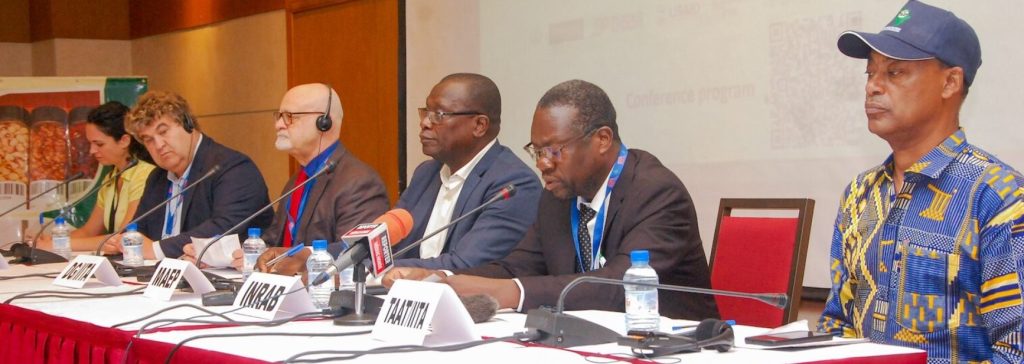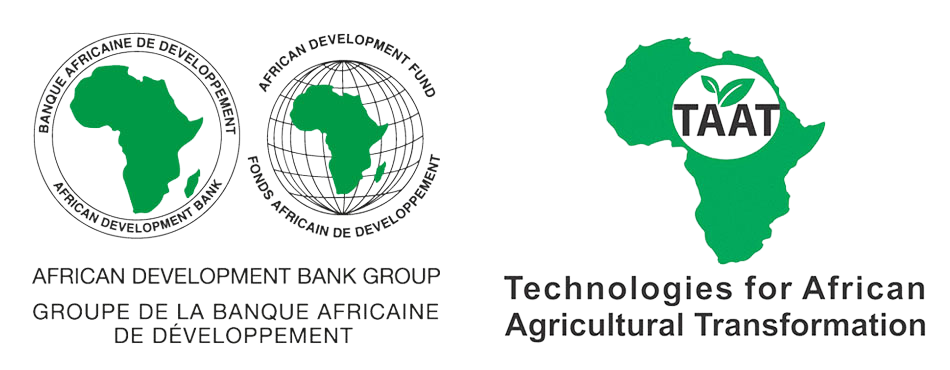TAAT reiterates support for enhancing Climate Resilience, Food and Nutritional Security through Cowpea technologies

Technologies for African Agricultural Transformation (TAAT) has restated its commitment to scaling innovative cowpea technologies to enhance climate resilience and food and nutritional security for Africans.
Dr Solomon Gizaw, Head of the TAAT Clearinghouse, disclosed this at the 7th World Cowpea Research Conference (WCRC), held from September 23rd to 26th, 2024, in Cotonou, Republic of Benin.
“TAAT remains committed to linking proven cowpea technologies with large-scale agricultural investments and loans from International financial institutions to facilitate climate and food system resilience across Africa,” Dr Gizaw said.
“We promise to integrate innovative cowpea technologies into our ecatalogs and drive their adoption by farmers through constructive engagements with governments and the private sector when designing large-scale agricultural investment projects and programmes,” he added.
With the theme “Cowpea Technologies for Improving Climate Resilience and Food and Nutrition Security”, cowpea experts, breeders and value chain actors are meeting in Cotonou to discuss cowpea technologies in the face of climate and food and nutritional security.
Abdoulaye Toko, Deputy Director of Cabinet at the Ministry of Agriculture, Livestock and Fisheries of Benin, said that holding the conference is an opportunity to help countries “strengthen the contribution of cowpea to the agri-food system and nutritional security in a context where climate change poses a real threat to agricultural development.”
Participants explored the latest developments and research on cowpea, a grain legume whose production in Africa faces climate change consequences.
“Cowpea cultivation is subject to biotic, abiotic and socioeconomic constraints, limiting the productivity and competitiveness of the sector. These include, among others, difficult access to quality seeds, the absence of variety dissemination strategies, drought and poor soils, and severe attacks by pests and diseases,” said Angelo Djihinto, Scientific Director of the conference and Director of Research at Agricultural Research Institute of Benin (INRAB).
The conference equally provided a space for exchanges in the production, processing, conservation and marketing of cowpea (Vigna unguiculata) in the face of the challenges of climate change, food security, poverty and the degradation of natural resources.
Participants noted that research efforts must be supported because, in West Africa and the Sahel, achieving food and nutritional security and reducing poverty have been, for decades, priority objectives of various public policies and investments in agricultural development.
However, agricultural yields and productivity remain among the lowest in the world. Food insecurity is still prevalent, and poverty is very severe, especially in rural areas.
In such a context, the participants, drawn from all over the world, about 80% from Africa, South America and South East Asia, indicated that research efforts must be supported.
Dr Joyce Mulila Mitti, a pathologist and cowpea breeder at the National Research Institute of Zambia, stressed the need for research engagement in her opening address to the proceedings, “Harnessing research for development opportunities to position cowpea for meaningful contribution to the achievement of the SDGs.”
Kenton Dashiell, Deputy Director General for Partnership at the International Institute of Tropical Agriculture (IITA), called for more partnerships in the face of the cowpea sector’s issues and challenges.
“We want to work with the community over the next four years to promote innovation that can help smallholders grow their production and do great things for rights holders,” said Dr. Barry Pittendrigh of Michigan State University.
Nutritive and fertilizing properties of cowpea
Cowpea, a grain legume, is an important staple food for households in sub-Saharan Africa, particularly in the arid savanna regions of West Africa.
The seed is rich in protein, carbohydrates, vitamins and minerals and complements the main cereal diet in countries where this legume is a major food crop.
In addition to the seed, the juvenile leaves and immature green pods are consumed as a vegetable by the populations. Cowpea also provides an important nutritious fodder for ruminants, particularly during the dry season.
It also plays a major role in soil fertilization, providing nitrogen for cereal crops, which follow it in rotation systems. It helps to preserve soil structure and is important against erosion.
“The leaves, pods and seeds are used for human consumption. The tops are used to feed animals, the fixation of atmospheric nitrogen by the crop nodules and the burial of the tops ensure nitrogen fertilization of the soil,” says Djihinto.
One of the oldest legumes cultivated in sub-Saharan Africa, cowpea is considered one of the main legumes in West and Central Africa. It provides essential environmental services and contributes to the diversification of production systems.
It also plays a vital role in the diet and food security of populations and is characterized by both high energy density and high nutritional density due to its richness in proteins, fibres, and micronutrients. The cowpea sector thus generates many jobs, whether in the production, distribution, processing, or catering sectors.
According to researchers, cowpea plays an important role in food security and poverty reduction in Benin. It represents an important source of vegetable protein and contributes to solving malnutrition problems in both children and adults. The annual production of cowpea in Benin is estimated at more than 142 thousand tons, with a relatively low yield of 960 kg per hectare.
A survey conducted in Cotonou shows that 90% of respondents eat cowpea at least once a week. It is used in several dishes and there is a diversity of processed cowpea products, which constitute substantial sources of income, particularly for women in both urban and rural areas.
This is why a fair involving value chain actors is being organised on the sidelines of the conference to promote the adoption of cowpea products.
Scientific research to the rescue of cowpea
“In a context characterized by an ever-increasing rural agricultural population and the availability of agricultural land that is constantly diminishing from generation to generation, at the level of farms and agricultural households, the sustainable increase in agricultural production to meet growing food needs involves improving crop productivity and not necessarily increasing the cultivation area as observed today.
“To achieve this objective of producing more on a reduced surface area, it is imperative for our national and international agricultural research systems to promote innovation by discovering new ideas, technologies and methods to reverse the current trend and make agri-food systems sustainable,” says Toko.
Cowpea is one of the plants most attacked by bio-aggressors. “We have low yields but also post-harvest losses. Faced with these constraints, agricultural research has developed several improved varieties in Benin listed in the Beninese catalogue of plant species and varieties. Alternatives to synthetic pesticides, which are less polluting, less toxic, and less expensive, have been developed by research,” said Djihinto.
The 7th World Cowpea Conference is organised by IITA, the French Research Institute for Development (IRD) and the National Institute of Agricultural Research of Benin (INRAB), with support from several partners TAAT.


